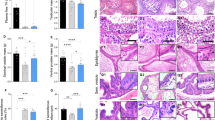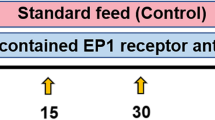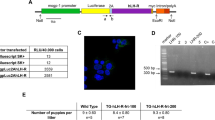Abstract
Ovariectomy at 1 month of age promotes development of hepatocellular adenomatous nodules in female C57BL/6 x DS-F1 mice treated neonatally with 3'-methyl-4-dimethylaminoazobenzene (3'-Me-DAB). Implantation of oestradiol-17 beta (E2) pellets at 1 month of age suppresses nodule development. Since E2 increases serum levels of prolactin, high serum levels of prolactin in mice that have received implants of E2 pellets may play a role in the suppression of hepatocellular tumorigenesis. Therefore, to investigate the role of prolactin in hepatocellular tumorigenesis, we examined development of adenomatous nodules in female mice that had been treated neonatally with 3'-Me-DAB and had undergone ovariectomy at 1 month of age, under various serum levels of prolactin. Treatment of these mice with perphenazine (dopamine antagonist) from 6 months of age or transplantation of pituitary glands under the renal capsule at 6 months of age markedly increased serum levels of prolactin and significantly suppressed the incidence of adenomatous nodules at 12 months of age. Implantation of E2 pellets at 1 month of age increased serum levels of prolactin to a greater extent and further decreased the incidence of adenomatous nodules. Treatment of mice that had received implants of E2 pellets at 1 month of age with bromocriptine (dopamine agonist) from 6 months of age decreased serum levels of prolactin, and was accompanied by an increase in the incidence of nodules. The present results showed that an increase in serum levels of prolactin was accompanied by a decrease in incidence of liver tumours induced by 3'-Me-DAB in mice, suggesting a suppressive effect of prolactin on liver tumorigenesis in mice. Thus, it is possible that the suppressive effect of oestrogen on liver tumorigenesis in mice is mediated, at least in part, by prolactin.
This is a preview of subscription content, access via your institution
Access options
Subscribe to this journal
Receive 24 print issues and online access
$259.00 per year
only $10.79 per issue
Buy this article
- Purchase on Springer Link
- Instant access to full article PDF
Prices may be subject to local taxes which are calculated during checkout
Similar content being viewed by others
Author information
Authors and Affiliations
Rights and permissions
About this article
Cite this article
Yamamoto, R., Iishi, H., Tatsuta, M. et al. Correlation between serum prolactin levels and hepatocellular tumorigenesis induced by 3'-methyl-4-dimethylaminoazobenzene in mice. Br J Cancer 72, 17–21 (1995). https://doi.org/10.1038/bjc.1995.270
Issue Date:
DOI: https://doi.org/10.1038/bjc.1995.270
This article is cited by
-
Sexual dimorphism in solid and hematological malignancies
Seminars in Immunopathology (2019)
-
Sexual dimorphism in cancer
Nature Reviews Cancer (2016)



